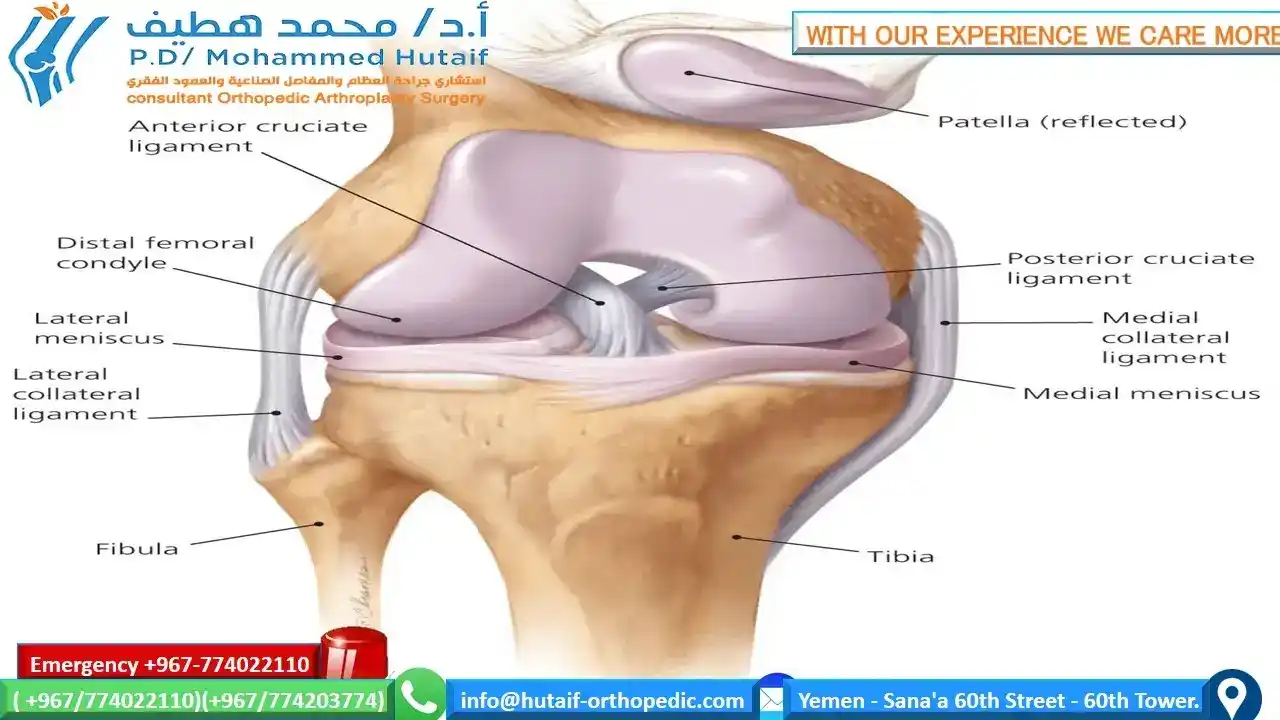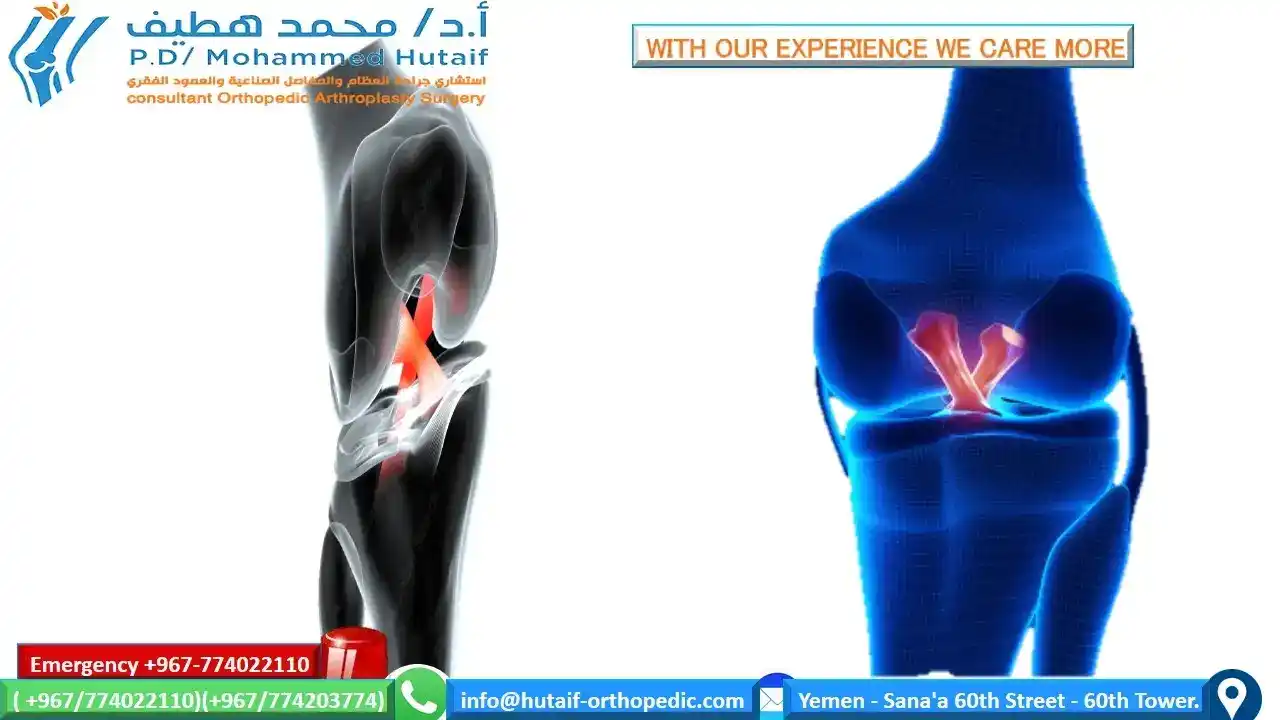Anterior Cruciate Ligament with photos
Anterior Cruciate Ligament (ACL)
It is one of the main ligaments that help stabilize your knee joint. The anterior cruciate ligament connects the femur and tibia. It often tears during sports that involve sudden stops and changes in direction - such as basketball, football, tennis and volleyball.
If you have injured your ACL, you may need surgery to restore full function to your knee. This will depend on several factors, such as the severity of your injury and your level of activity.
ANATOMY
Three bones meet to make up your knee joint: the femur, shinbone (tibia), and kneecap. The patella rests in front of the joint to provide some protection.
Bones are connected to other bones by ligaments. There are four main ligaments in your knee. They work like strong ropes to hold the bones together and keep your knee stable.

Side Ligaments (collateral ligaments)
These are located on either side of your knee. The medial collateral ligament on the inside and the lateral collateral ligament on the outside. They control the lateral movement of your knee and support it against the unusual movement.
Cruciate Ligaments
These are located inside your knee joint. They cross each other to form an "X" anterior cruciate ligament in front and a posterior cruciate ligament in the back. The cruciate ligaments control the movement of your knee back and forth.

The anterior cruciate ligament extends diagonally in the middle of the knee. It prevents the tibia from sliding in front of the femur, and provides rotational stability for the knee.
Description
About half of ACL injuries occur along with damage to other structures in the knee, such as meniscus, cartilage , or other ligaments.
Grades
ACL injuries are usually classified as grades 1, 2 or 3. It is rated on a scale of severity.
Grade 1 sprain
Injuries of the first degree to the anterior cruciate ligaments (ACLs) that have sustained minimal damage include, for example, the ACL stretching slightly but still providing adequate stability to the knee joint.
Grade 2
Grade II ACL injuries are rare and describe a partially stretched and torn anterior cruciate ligament.
Grade3
Complete rupture. Grade 3 ACL tears occur when the ACL is completely torn in half and no longer provides any stability to the knee joint, and the knee joint is unstable.
Partial rupture of the anterior cruciate ligament is rare. Most ACL injuries are complete or nearly complete tears
Causes
The Anterior Cruciate Ligament can be injured in several ways:
- stop suddenly
- Received a direct hit to the knee
- Change direction quickly
- Deceleration while running
- Landing from jumping incorrectly
- Direct contact or collision, such as in football
Several studies have shown that females are more likely to have an ACL injury than male athletes in some sports. It has been suggested that this is due to differences in physical conditioning, muscular strength, and neuromuscular control. Other proposed causes include differences in the alignment of the pelvis and lower extremities (leg), increased laxity of the ligaments, and the effects of estrogen on ligament properties.
ACL injuries often occur during sports and fitness activities that can put pressure on the knee
Risk factors
Number of factors increase the risk of an ACL injury, including:
- Participation in certain sports, such as soccer, basketball, gymnastics and downhill skiing
- Bad conditioning
- Using the wrong movement patterns, such as turning the knees inward while squatting
- Wearing inappropriate shoes
- Using poorly maintained sports equipment, such as ski hitters that have not been properly adjusted
- Playing on artificial turf
- Being female - possibly due to differences in anatomy, muscle strength, and hormonal influences
Next page: Anterior Cruciate Ligament injuries SYMPTOMS


